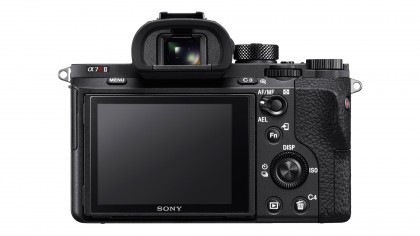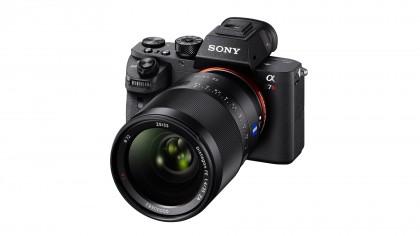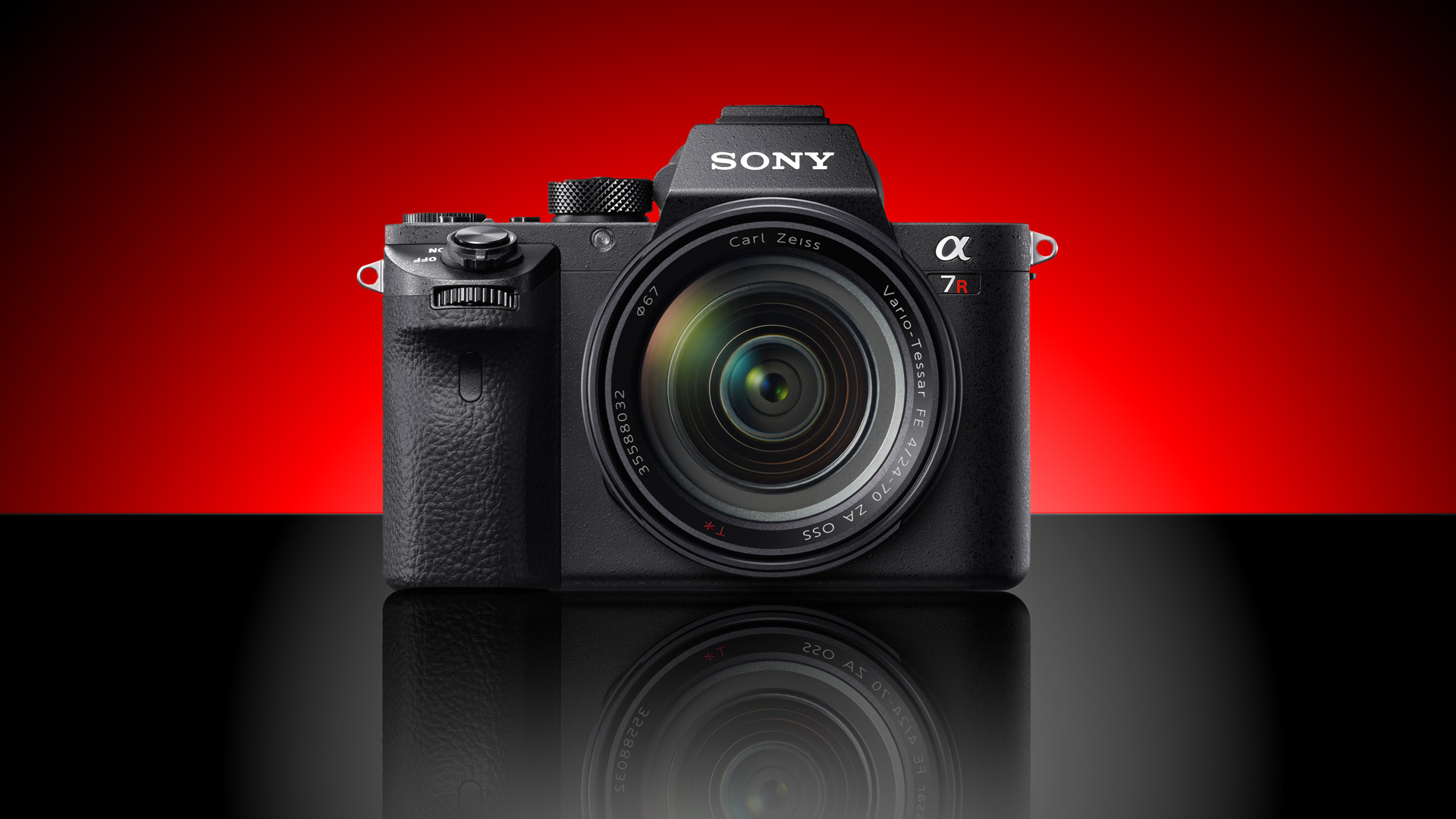Why you can trust TechRadar
Like the other cameras in the Alpha 7 line, the A7R II has a retro SLR-like design. However, Sony has taken on board some of the criticisms made of the original A7 and A7R, and has made the same handling tweaks to the A7R II as it did to the A7 II.
The front grip is more pronounced, making it more comfortable and secure in use. The shutter release button is moved forward onto the top of the grip, and beneath it there's a conveniently placed recessed dial for adjusting settings. This has created space for a second customisable button on the top plate.
As with the rest of the A7 series, the A7R II has a magnesium alloy construction and is weather-sealed. Most of the camera feels very solid, with a pleasant density, but the front grip creaks when it's held tightly – I'm not talking about the type of grip that crushes bone in a handshake, but the grip that's required when you've got a lens like FE 16-35mm f/4 or 70-200mm f/4 mounted.
Sony has added a lock to the mode dial to prevent it being knocked out of position – it's the type that has to be pressed every time the dial is rotated, rather than our preferred 'lock-and-unlock' type.
Instead of the barrel-like dial that's located above the thumb rest on the A7R, the A7R II has a more standard slim dial. Although the camera is relatively small I found this a little awkward to reach with my thumb when holding the camera one-handed.

One of the great things about the A7R II is that it's highly customisable. The control wheel on the back of the camera, for example, can be assigned to adjust one of six settings – I found it useful for adjusting sensitivity quickly – and one of 62 functions can be assigned for access via each of the four Custom buttons.
Three of the navigation buttons and the centre button on the back of the camera can also be used as shortcuts to features, and 12 of 34 functions can be assigned for access via the Function menu. The default setup makes a good starting point, but it's worth experimenting to find your optimum configuration.
It would be nice, however, if there were two Function menus, one for stills and the other for video, and given the level of customisation that's available in other areas it seems strange that the A7R II doesn't have a customisation screen in the main menu. Stills photographers will find everything relatively sensibly arranged, but the navigation process could be streamlined with separate sections for stills and video shooters.
As it stands, videographers may find that they have to keep jumping backwards and forwards within the menu. For example, the option to activate Super 35mm mode for video is located in the Custom section of the menu, away from the video quality settings, which are in the Camera Settings section – on the same screen as the drive mode and bracketing options.
And while the Picture Profile options, which allow Gamma etc to be set for video (and stills) are located in the Camera Settings section, they're five screens away from the Video Quality settings.

I found the 2,359,296-dot OLED electronic viewfinder (EVF) superb for composing images. It's clear, and plenty of detail is visible with no obvious texture, although its preview is a little more vibrant than both the scene and the captured image; this is the opposite of the Alpha 7 II's EVF, which makes the scene look quite dull. The captured image itself is a good likeness of the image viewed on a monitor.
In decent light the magnified view in the viewfinder, or on the excellent 3-inch tilting screen, makes focusing manually a breeze. In relatively low light the slight shimmer of noise makes the view a little soft, and finding the point of focus a bit trickier – but it wouldn't be easy with an optical viewfinder either. Focus peaking is helpful, but this depends upon how much contrast there is in the scene and, as usual, it may not highlight the area you're most interested in.
When I tested the Sony Alpha 7 II the sound of the shutter firing came as a surprise because it was so loud – it almost sounded like there was a mirror clacking around inside the camera. Thankfully the A7 R II's shutter is quieter; it's not exactly a whisper, but it's less obtrusive than the A7 II's.
As on the Alpha 7 II, the record button for shooting video is on the side of the thumb-ridge on the back of the camera. This is quite awkward to access; it's not a problem if the camera is on a tripod, but if you're hand-holding it's hard to reach, and there were several occasions when I thought I'd pressed it with my thumb when I hadn't. Thankfully it's possible to customise one of the function buttons on the top-plate to start and stop video recording.
